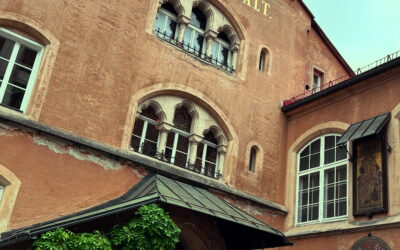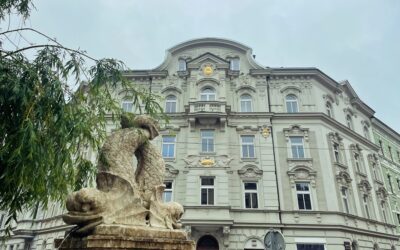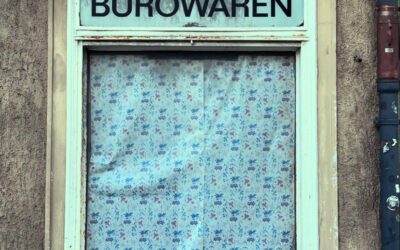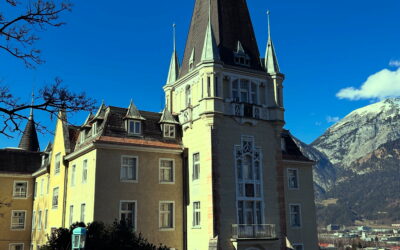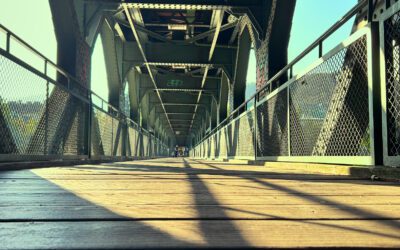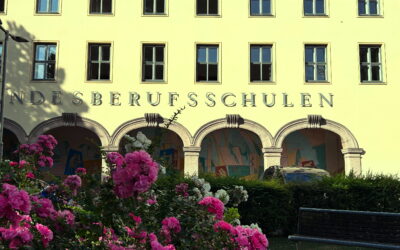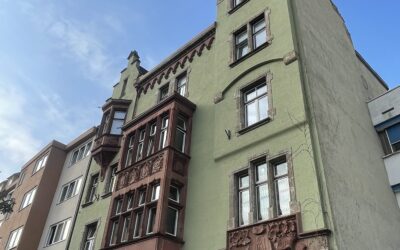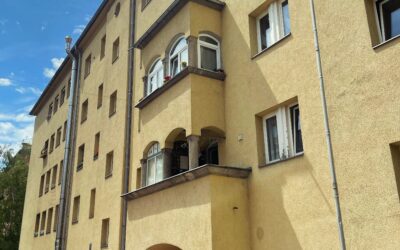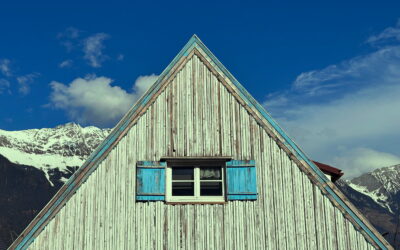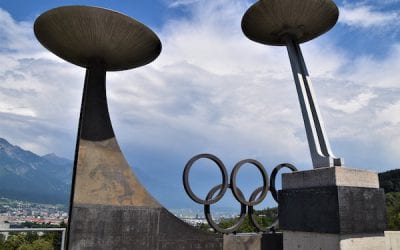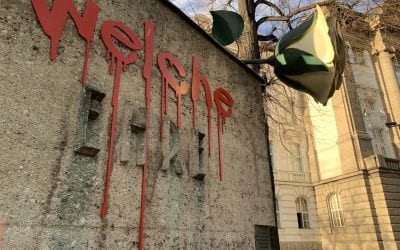Wilten & Sieglanger
Wissenswertes zu Wilten & Sieglanger
Judging by archaeological finds, Wilten could be described as Innsbruck's nucleus. A large number of graves, wall remains, coins, pottery and water channels were unearthed during excavations between Mount Isel and the Olympic Bridge. After the Roman colonisation around the turn of the century, a military base was established in the area that is now Wilten. The Castell Veldidena developed into the settlement of Wilten, which was first documented in 806. Locus Wiltinaa village that provides evidence of the continuous settlement of this area.
After the dissolution of the Western Roman Empire in 476 AD, Tyrol slowly and insidiously came under the control of the Duchy of Bavaria. By 1180, when the Counts of Andechs began to establish the market on the southern bank of the Inn, from which Innsbruck was to emerge, Wilten had already been around for over 1000 years. Christianity and Wilten Abbey were established institutions. The Bavarians were only too happy to take over this local administrative centre, both ecclesiastically and politically. In order to expand their settlement, the Andechs had to wrest the land from the monastery. Not only in 1180, but also in 1339 and 1453, the expansion of Innsbruck only took place after the acquisition of land from the Wilteners. With great foresight, Wilten Abbey had many special rights contractually enshrined in return. As a result, the city was dependent on the community south of the city in many respects. The Small SillThe canal, which was built in the High Middle Ages, supplied the town with water, which was essential for the town's trades. As the canal flowed through the lands of Wilten Abbey, the abbot had the power of disposal over the right of use until the 16th century, as he did over so many other things. Another special right of the abbey was the right to mill. In the Middle Ages, Innsbruck farmers with grain had to make a pilgrimage to the Wilten mills on the Sill to grind their grain. If medieval towns ran out of bread, there was a risk of unrest and riots, as grain was the main ingredient in the daily diet. The abbot also raised the Zehenten a tax that belonged to the church.
Throughout the centuries, Wilten was primarily important as an ecclesiastical authority. The relationship between the ecclesiastical power in Wilten in the person of the abbot and the secular power in Innsbruck in the person of the sovereign, supported by the Jesuits from the 16th century onwards, was similar to the ongoing dispute between the Pope and the Emperor in the Middle Ages. The town was dependent on the abbot in matters of pastoral care and the mass service. The parish church of St Jakob was merely a branch of Wilten Abbey. Until 1560, Wilten Abbey managed to prevent further monastery settlements in Innsbruck in order to maintain its sphere of influence. It was only during the Reformation that Ferdinand I, a prince from Spain who disregarded many local customs and later Emperor, managed to establish a monastery in the city. At his insistence, the Jesuits came to the court in 1561, followed shortly afterwards by the Franciscans. Masses on high holidays such as Christmas, Easter and baptisms were still celebrated in Wilten. Inns near the monastery were happy to welcome regular visitors from the town on these days.
With the developments of the second half of the 19th century, Wilten and Innsbruck grew together economically and socially. From the 1860s onwards, the area between Innrain and Südring, along the old country lanes of the agricultural area to the south and west of the city, saw the construction of the residential and apartment buildings in which employees and workers lived, many of which are still worth seeing today. Innsbruck residents had businesses in Wilten and vice versa.
The customs border at the Triumphal Gate became more and more absurd. Foodstuffs such as beer, wine, meat and grain traded between Innsbruck and Wilten had to be cleared through customs. The internal customs duty on basic foodstuffs was perceived as harassment. The so-called Akzise was hated by citizens on both sides, as it made daily life unnecessarily expensive. The building, which is clearly recognisable in archive photos Accis-Häuschen after unification and the discontinuation of the Viennese Bazaar a kind of early shopping centre.
Wilten was incorporated in 1904 as part of the modernisation of the city of Innsbruck under Mayor Wilhelm Greil. The population had tripled within a few decades. The village had become a town that was increasingly linked to Innsbruck while at the same time competing with it. Water and electricity changed people's everyday lives and standard of living, but first had to be financed. Around 1900, Wilten only had one school for over 10,000 inhabitants, while Innsbruck had six for 25,000. It would have been deeply unreasonable to modernise Wilten and Innsbruck in parallel and yet separately. The first tram ran from Berg Isel to the main railway station as early as 1905.
Much bears witness to this growth and the incorporation of the town at the turn of the century, which was largely driven by Greater German Liberal politicians. In Wilten, the "Helden“ der Tiroler Erhebung von 1809 in Straßennamen wie Andreas-Hofer-Straße, Speckbacherstraße oder Haspingerstraße verewigt. Westlich wuchs die Stadt entlang der Anichstraße bis zur Klinik und dem Westfriedhof in dieser Zeit ebenfalls. Die Gründerzeithäuser sind ebenso sehenswert wie die Südtirolersiedlung nahe dem Südring in der Speckbacherstraße. Ein kurzer Spaziergang von der Anichstraße durch die Kaiser-Josef-Straße, die Speckbacherstraße, die Stafflerstraße bis zur Sonnenburgstraße, besonders die Häuser 17 und 19 sind sehenswert, gibt einen guten Eindruck vom Städtebau zwischen 1880 und 1945.
Apart from folklore, there is hardly anything left to remind us of the separation between Wilten and Innsbruck. To celebrate the unification of Wilten and Innsbruck, Johann von Sieberer had the Unification fountain at the railway station, which was removed under the National Socialists to make more room for traffic. Two boundary stones with the coats of arms of Innsbruck and Wilten were also walled into the bay window on the ground floor on the outer wall of the Hotel Goldene Krone in Maximilianstraße, the former border road, are still a reminder of this.
Today, Wilten is a diverse and lively neighbourhood. Between the Upper village Around Gasthaus Haymon, Wilten West near the cemetery and the Triumphpforte, you will find traditional and new city life in close proximity. Functional housing from the 1960s and 1970s meets baroque town houses. The proximity to the university and hospital in combination with the spacious flats in old buildings make Wilten attractive for students. In quaint pubs such as the Jolly treffen alteingesessene Wiltener auf junges Publikum.
The Sieglanger in the west of the city was a fief of Wilten Abbey, on which a manor house was built in the 15th century, today's Mentlberg Castle. Historical maps show the differences between the undeveloped state in 1930 in various stages up to the densified settlement from 1980 onwards. In the 19th century, the area on which the still popularly known Zieglstadl a brickworks stands on the site of the prison. Today's Sieglanger am Inn was a Lower Figge known and undeveloped. After the Second World War, Sieglanger became more densely populated. In 1964, the motorway was built, a less picturesque boundary to the district. Since 1977, the impressive Sieglanger bridge with a span of 147 m over the motorway and the Inn has connected Sieglanger with two other settlements, the former Neustädter Stürmer settlement on the Lohbach and the Höttinger Au, in an uncomplicated way for cyclists and pedestrians.
Tyrolean Glass Painting and Mosaic Institute
Müllerstrasse 10
Sonnenburgplatz
Sonnenburgstraße
Leopoldstraße & Wiltener Platzl
Leopoldstrasse
Mentlberg Castle & Pilgrimage Church
Mentlberg 23
Karwendel bridge
Karwendel arches
Provincial vocational school
Mandelsbergerstrasse 16
Fraternity House Austria
Josef-Hirn-Straße
South Tyrolean settlement Wilten West
Speckbacherstrasse
Johanneskirche
Bischof-Reinhold-Stecher-Platz
Dollfußsiedlung & Fischersiedlung
Weingartnerstrasse
Mountain Isel
Mountain Isel 1
Winklerhaus
Leopoldstraße/Maximilianstraße
University of Innsbruck
Innrain 52
Wilten Abbey
Klostergasse 7
